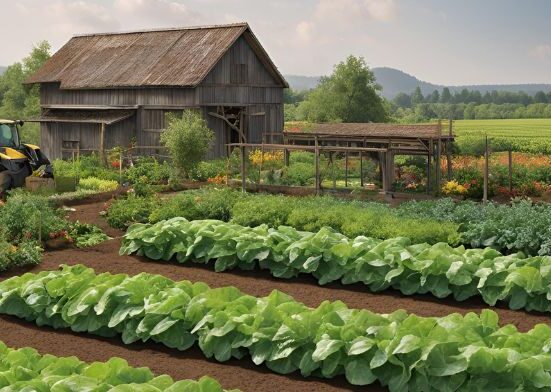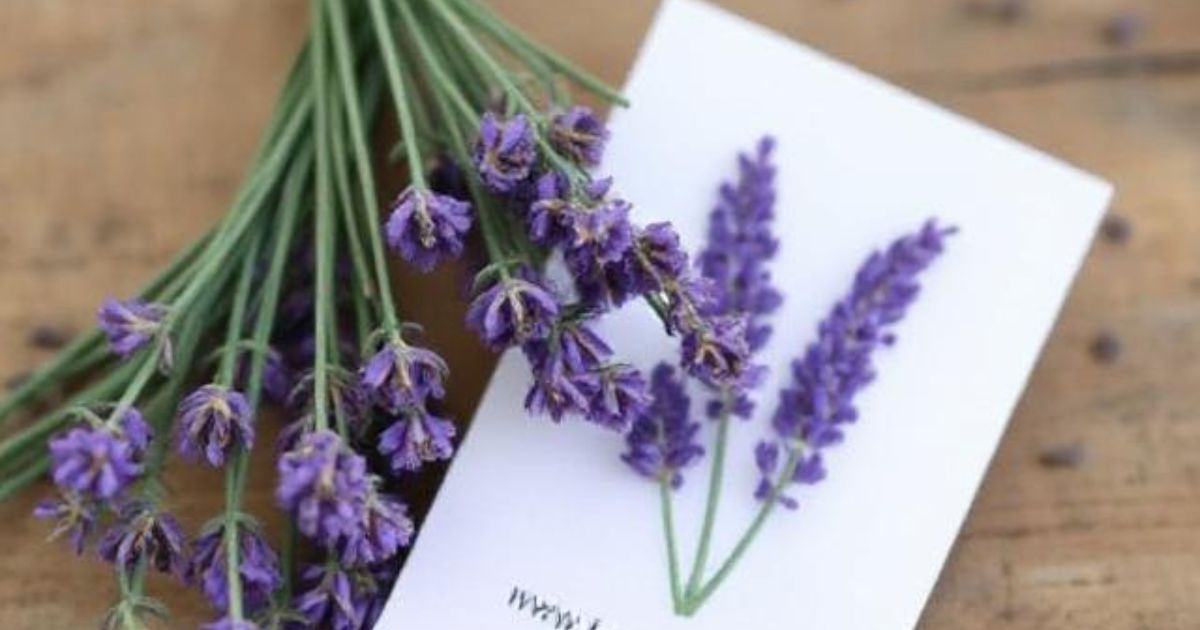Lavender, with its soothing scent, delicate purple blooms, and timeless charm, has long been a favorite in gardens and homes around the world. While many gardeners opt for nursery-grown plants, growing lavender from seeds offers a deeper connection to the process and an enriching experience. Imagine watching your own lavender sprout, bloom, and fill the air with calming fragrance all from a handful of tiny seeds.Though lavender seeds are known for being a bit slow to germinate, they reward patient growers with hearty, long-living plants that thrive in the right conditions. Whether you’re aiming to cultivate a calming herb garden, craft homemade gifts, or enjoy the beauty and aroma of this versatile plant, starting from seed is not only possible, it’s powerful.
In this ultimate guide, you’ll learn everything you need to know: from selecting the right variety and starting seeds properly, to transplanting, caring for young plants, and enjoying your first fragrant harvest. Let’s dive into the world of lavender, where beauty, wellness, and gardening joy all begin with a single seed.
What Do Lavender Seeds Look Like?
Lavender seeds are small, oval-shaped, and typically dark brown to black in color. At first glance, they may resemble tiny grains or specks of pepper. Measuring just a few millimeters long, these seeds are surprisingly sturdy for their size and have a smooth, slightly glossy surface. Despite their delicate appearance, lavender seeds carry the potential to grow into hardy, fragrant plants beloved by gardeners and pollinators alike.One thing to keep in mind is that lavender seeds can often be mistaken for dried flower debris, especially if you’re harvesting your own seeds or buying from less refined sources. Always ensure you’re getting high-quality seeds from a trusted supplier; they should be clean, dry, and free of dust or chaff.
It’s also important to note that not all seeds in a packet will germinate, Zinnia Perennial as lavender is known for lower germination rates. That’s why many gardeners plant more seeds than needed to increase their chances of success.Whether you’re sowing them indoors or directly in your garden, recognizing these tiny but mighty seeds is the first step in your lavender-growing journey. Treat them with care and patience, and they’ll reward you with fragrant beauty season after season.
How Do You Grow Lavender?
Growing lavender from seed may take a bit of patience, but it’s a rewarding process that results in a beautiful, fragrant plant. Start by selecting a hardy variety like English Lavender, especially if you live in a cooler climate. Because lavender seeds have a slow and uneven germination rate, it’s best to begin indoors 10–12 weeks before the last frost.First, gently press seeds into a well-draining seed-starting mix. Don’t cover them deeply, as they need light to germinate. To improve germination, consider cold stratifying the seeds by keeping them in the fridge for two to four weeks before sowing. Keep the soil moist (not soggy) and warm, around 65–70°F (18–21°C), using a heat mat if necessary.
Once seedlings develop true leaves and are strong enough, transplant them into larger pots or your garden, choosing a sunny spot with excellent drainage. english lavender seeds thrives in full sun and poor to average soil, so avoid overwatering or using rich compost.Water young plants regularly, but once established, lavender is drought-tolerant. To encourage bushy growth, softly prune in the early spring. With the proper care, your lavender will grow into a hardy, aromatic plant perfect for borders, bouquets, or calming DIY projects.
Why Grow Lavender from Seeds?
Lavender (Lavandula spp.) is a perennial herb known for its aromatic foliage, stunning flowers, and myriad uses, from culinary delights to aromatherapy. While many gardeners opt for lavender cuttings or nursery plants, starting from seeds offers unique benefits:
- Cost-Effective: Seeds are significantly cheaper than mature plants, allowing you to grow multiple lavender plants on a budget.
- Variety: Seeds provide access to a wide range of lavender varieties, Are Sunflowers Perennials from English lavender (Lavandula angustifolia) to French lavender (Lavandula stoechas).
- Satisfaction: There’s a special joy in nurturing a plant from seed to bloom, witnessing the full life cycle of your lavender.
- Customization: Growing from seeds allows you to experiment with different cultivars suited to your climate and aesthetic preferences.
However, lavender seeds require patience, as they can be slow to germinate and grow. With the proper techniques, you’ll be rewarded with healthy, fragrant plants that enhance your garden for years.
When to Plant Lavender Seeds
Timing is crucial when growing lavender from seed, as it’s a slow-germinating herb that needs warmth, light, and patience. Lavender seeds are best started indoors between the hours of 8 and 12 weeks before your region’s last expected frost date. For most areas, this means late winter to early spring — typically January to March, depending on your local climate.Seeds have a good start when they are started indoors. , allowing seedlings to develop strong roots before being transplanted outdoors in warmer weather. It can take two to four weeks for lavender seeds to sprout. Sometimes even longer, so beginning early ensures the plants are ready by spring.
If you prefer to sow, wait until after the last frost, when soil temperatures continuously remain over 60°F (15°C), before planting seeds directly in your garden. However, direct sowing is less reliable because lavender needs stable warmth and consistent moisture to germinate.In the fall, you can also plant seeds. And let nature stratify them over winter. In this method, seeds lie dormant through the cold season and begin growing in early spring.Whichever method you choose, proper timing and preparation are key to growing strong, fragrant spanish lavender seeds .
Choosing the Right Lavender Seeds

Before you start, selecting the right lavender seeds is crucial for success. Here are some popular lavender varieties to consider:
- English Lavender (Lavandula angustifolia): Hardy, fragrant, and ideal for cooler climates. Popular varieties include ‘Hidcote’ and ‘Munstead.’
- French Lavender (Lavandula stoechas): Known for its distinctive “bunny ear” flower heads, this variety thrives in warmer climates.
- Spanish Lavender (Lavandula dentata): Features toothed leaves and a slightly camphorous scent, perfect for Mediterranean-style gardens.
- Lavandin (Lavandula x intermedia): A hybrid of English and Spike lavender, known for its vigorous growth and intense fragrance, like ‘Grosso.’
When purchasing seeds, choose a reputable supplier to ensure high-quality, viable seeds. Verify the germination rates on the seed packet and sowing instructions, as different varieties have specific needs.
Step-by-Step Guide to Growing Lavender from Seeds
Step 1: Timing and Preparation
Lavender seeds require specific conditions to germinate successfully. Timing is critical, as lavender prefers warm soil and stable temperatures. Here’s how to prepare:
- When to Start: Start seeds indoors 8-12 weeks before the last frost date in your area (typically late winter to early spring). For example, if your last frost is in April, begin in January or February.
- Stratification: Many lavender varieties, especially English lavender, benefit from cold stratification to break seed dormancy. Place. Wrap the seeds in a plastic bag, How To Grow Zinnia Flowers: put a moist paper towel over them, and keep them in the refrigerator for three to six weeks. This mimics winter conditions and boosts germination rates.
- Materials Needed:
- Lavender seeds
- Seed-starting trays or small pots
- Seed-starting mix (well-draining, with sand or perlite)
- Spray bottle for misting.
- Plastic wrap or a humidity dome
- Grow lights or a sunny windowsill.
Step 2: Sowing the Seeds
Once stratified, it’s time to sow your lavender seeds:
- Prepare the Soil: Fill seed trays or pots with a well-draining seed-starting mix. Lavender thrives in slightly alkaline, sandy soil with a pH of 6.5-7.5. Avoid heavy, clay-based soils.
- Sow the Seeds: Scatter seeds lightly on the top of the soil, gently pressing them into the mixture. lavendar seeds need light to germinate, so don’t cover them with soil.
- Moisture and Cover: Mist the soil with water to keep it damp but not soggy.
- Temperature: Set the tray somewhere warm (between 70 and 75°F or 21 and 24°C). A heat mat can help maintain consistent temperatures.
Step 3: Germination
Lavender seeds can take 14-30 days to germinate, so patience is key. During this period:
- Keep Moist: Mist the soil regularly to prevent it from drying out.
- Provide Light: Once seedlings emerge, move them to a sunny spot or under grow lights (12-16 hours of light daily).
- Thin Seedlings: If multiple seedlings sprout in one spot, thin them to prevent overcrowding, keeping the most vigorous plants.
Step 4: Transplanting Seedlings
As seedlings grow, two to three sets of genuine leaves appear. (about 6-8 weeks after germination), They’re ready for transplanting:
- Hardening Off: Over seven to ten days, gradually adapt seedlings to outdoor environments. Start by placing them outside for a few hours in a shaded area, increasing exposure daily.
- Choose a Location: Lavender loves full sun (6-8 hours daily) and well-draining soil. If your soil is heavy, add gravel or sand to make it lighter. Or consider raised beds.
- Planting: Plants should be spaced 12 to 18 inches apart to promote growth and air circulation. Make sure the hole is slightly larger than the root ball. Place the seedling, and backfill with soil. Water thoroughly.
Step 5: Caring for Lavender Plants
Lavender is low-maintenance once established, but young plants need extra care:
- Watering: Use water sparingly and let the soil dry up in between applications. Lavender failure is frequently caused by overwatering.
- Fertilizing: Use a balanced, organic fertilizer sparingly (e.g., once a month during the growing season). Too much fertilizer can reduce fragrance.
- Pruning: Prune young plants lightly to encourage bushy growth. Once mature, prune annually after flowering to maintain shape and prevent woodiness.
- Winter Care: In colder climates, mulch around the base with straw or gravel to protect roots from freezing. Potted lavender can be brought indoors or placed in a sheltered area.
Troubleshooting Common Lavender Growing Issues
Growing lavender from seeds can present challenges. Here’s how to address common problems:
- Poor Germination: If seeds don’t sprout, ensure they’ve been appropriately stratified and are kept at the right temperature. Old or low-quality seeds may also be the culprit.
- Damping Off: This fungal disease causes seedlings to collapse. Lilac Flower Prevent it by using sterile soil, avoiding overwatering, and ensuring good air circulation.
- Leggy Seedlings: Weak, stretched seedlings indicate insufficient light. Move them closer to a light source or use grow lights.
- Yellowing Leaves: Frequently an indication of inadequate drainage or excessive watering. Check soil conditions and reduce watering frequency.
Creative Uses for Your Lavender Harvest
Once your lavender plants mature (typically in their second year), you’ll enjoy abundant blooms. Here are some creative ways to use your harvest:
- Aromatherapy: Dry lavender buds and create sachets for drawers, pillows, or closets to promote relaxation.
- Culinary Delights: Use edible lavender varieties (like ‘Munstead’) in recipes for teas, desserts, or infused honey.
- Crafts: Make lavender wreaths, candles, or soaps for homemade gifts.
- Garden Design: Use lavender as a border plant, as a companion plant in rock gardens, or to repel pests like aphids.
DIY Lavender Sachet Recipe

Ingredients:
- 1 cup dried lavender buds
- Small muslin or cotton bags
Instructions:
- Fill each bag with dried lavender buds.
- It is optional to add a few drops of essential lavender oil.
- Tie the bag securely and place it in drawers, under pillows, or in your car.
Conclusion
Growing avender from seed may take time and care, but the reward is truly worth it. From tiny, unassuming seeds spring the elegant, fragrant blooms that have soothed minds and beautified gardens for centuries. By starting with the right variety, preparing your seeds properly, and giving your plants the sunny, Fastest Growing Vegetables for Your Garden well-drained environment they love, you can enjoy the satisfaction of watching your lavender thrive from the very beginning.
Whether you’re dreaming of a peaceful garden corner, planning homemade lavender sachets, or want to try your hand at seed-starting, this journey offers both beauty and calm. Remember, patience is part of the process. Lavender teaches us to slow down and trust in steady growth. So grab your seeds, prepare your soil, and start your lavender-growing adventure today. Your senses and your garden will appreciate it.
FAQ
1. How Long Does It Take Lavender Seeds to Germinate?
Lavender seeds usually take 14 to 28 days to germinate, but some may take longer. Using cold stratification and maintaining warmth and light can speed up the process and improve germination rates.
2. Do Lavender Seeds Need Sunlight to Sprout?
Yes, lavender seeds need light to germinate. Without completely covering them, gently press them into the soil’s surface. Use a sunny windowsill or grow light for best results during the early stages.
3. Why Are My Lavender Seeds not Sprouting?
Slow germination is standard. Check for proper temperature (65–70°F), light, and moisture. Seeds may also need stratification. Avoid overwatering or using rich, soggy soil that can cause rot or mold.
4. Can I Plant Lavender Seeds Directly Outdoors?
Yes, but direct sowing is less reliable. When the last frost has passed, pick a bright, well-drained spot. Indoor starting is better for beginners and for stronger early growth.
5. When Will Lavender Bloom After Planting Seeds?
Lavender grown from seeds usually blooms in the second year. In the first year, the plant focuses on root and foliage development. With good care, you’ll enjoy blooms the following season.







